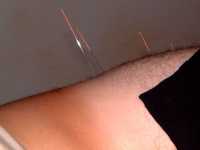PainRelief.com Interview with:
Prof. Wei Wang
Department of Neurology,
Tongji Hospital, Tongji Medical College,
Huazhong University of Science and Technology,
Wuhan, Hubei, P.R. China

PainRelief.com: What is the background for this study?
Response: The burden of migraine is substantial, resulting in considerable economic and social losses. The latest Global Burden of Disease Study showed that 1.25 billion people had migraine in 2017. A significant number of patients are still not responding well to drug therapy, or cannot tolerate the adverse effects of drugs, or have contraindications, which can lead to low medication compliance, headache chronification and acute medication overuse. Prophylactic drugs should be recommended for migraineurs who have at least four headache days per month, but only 13% of patients reported current use of preventive drugs. Besides, ineffectiveness of and/or contraindications to migraine medication affect 10-15% of people with migraine. Hence, a need exists to investigate non-drug interventions.
Previous studies suggest that acupuncture works particularly well on a range of pain disorders. However, clinical evidence for the benefit of manual acupuncture for migraine prophylaxis remains scarce. Appropriate placebo control settings and successful blinding are two critical elements in addressing this challenge. Sham acupuncture involving penetrating needles should be avoided in clinical trials. Previous acupuncture research has often used penetrating sham acupuncture, involving needling non-acupuncture points, needling irrelevant acupuncture points, or superficial needling. However, whether the needle is inserted into an acupuncture point or a non-acupuncture point, it could produce a physiological effect. Comparisons between true acupuncture and sham acupuncture might also be biased by unsuccessful blinding. To ensure an inert placebo control and successful blinding, we recruited acupuncture-naive patients, using non-penetrating sham acupuncture at heterosegmental non-acupuncture points as the control, and designed the same procedures to perform the same rituals as much as possible in the manual and sham acupuncture groups.
Continue reading